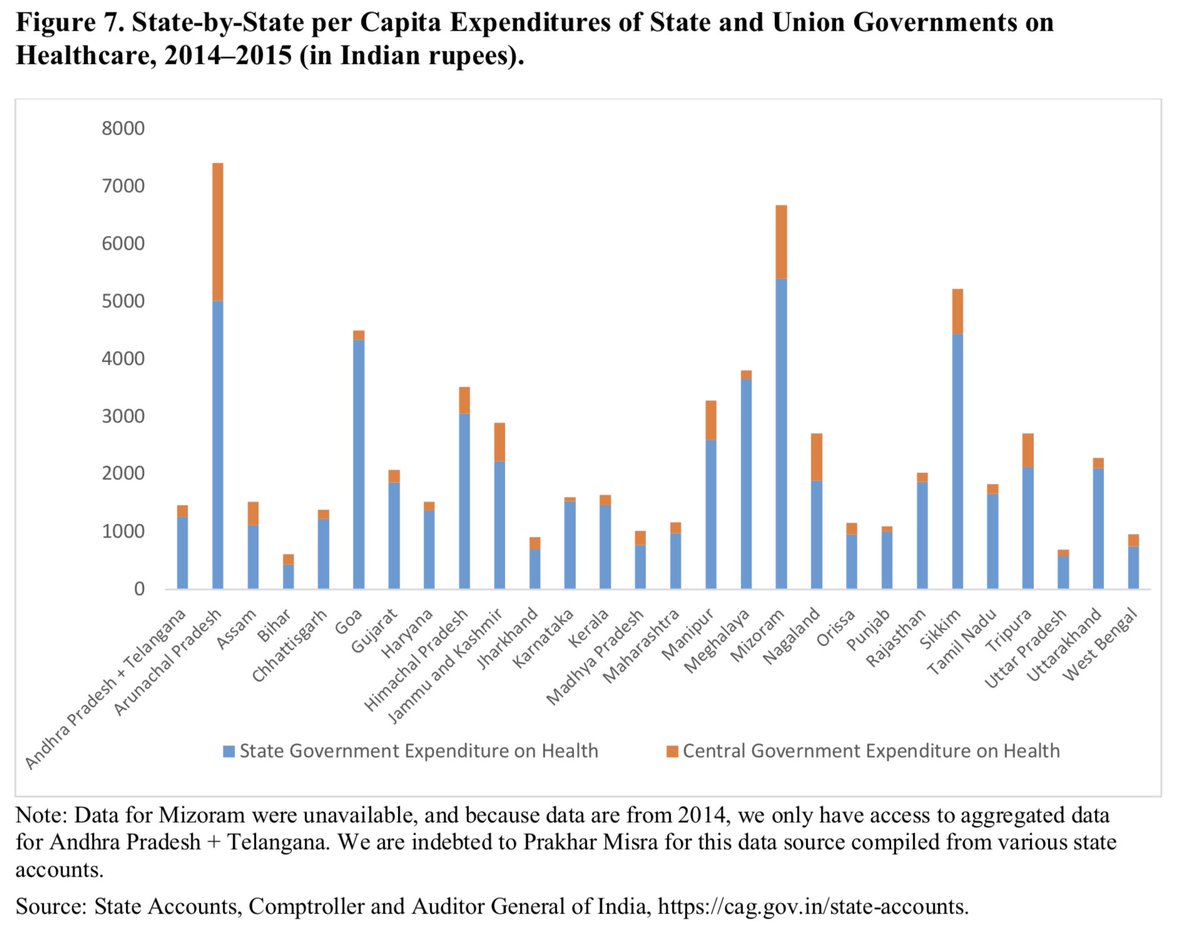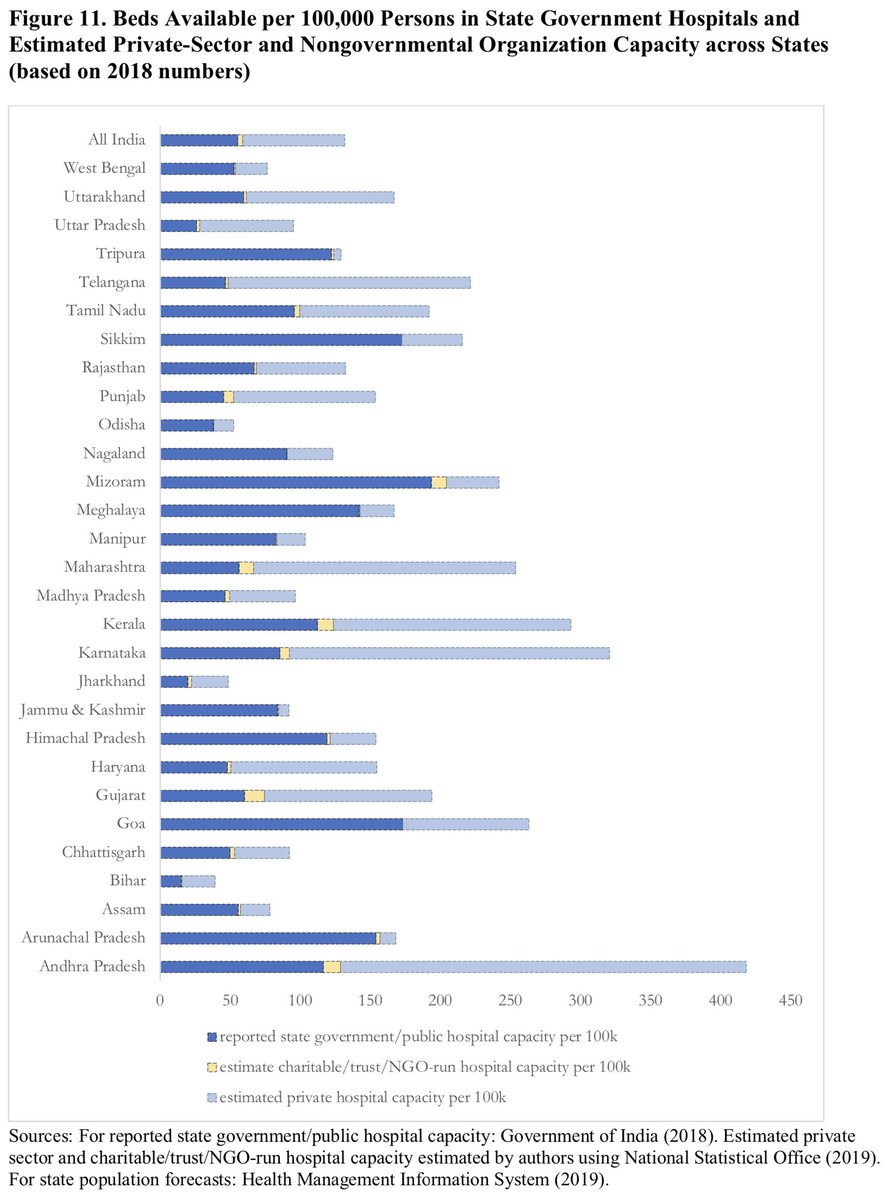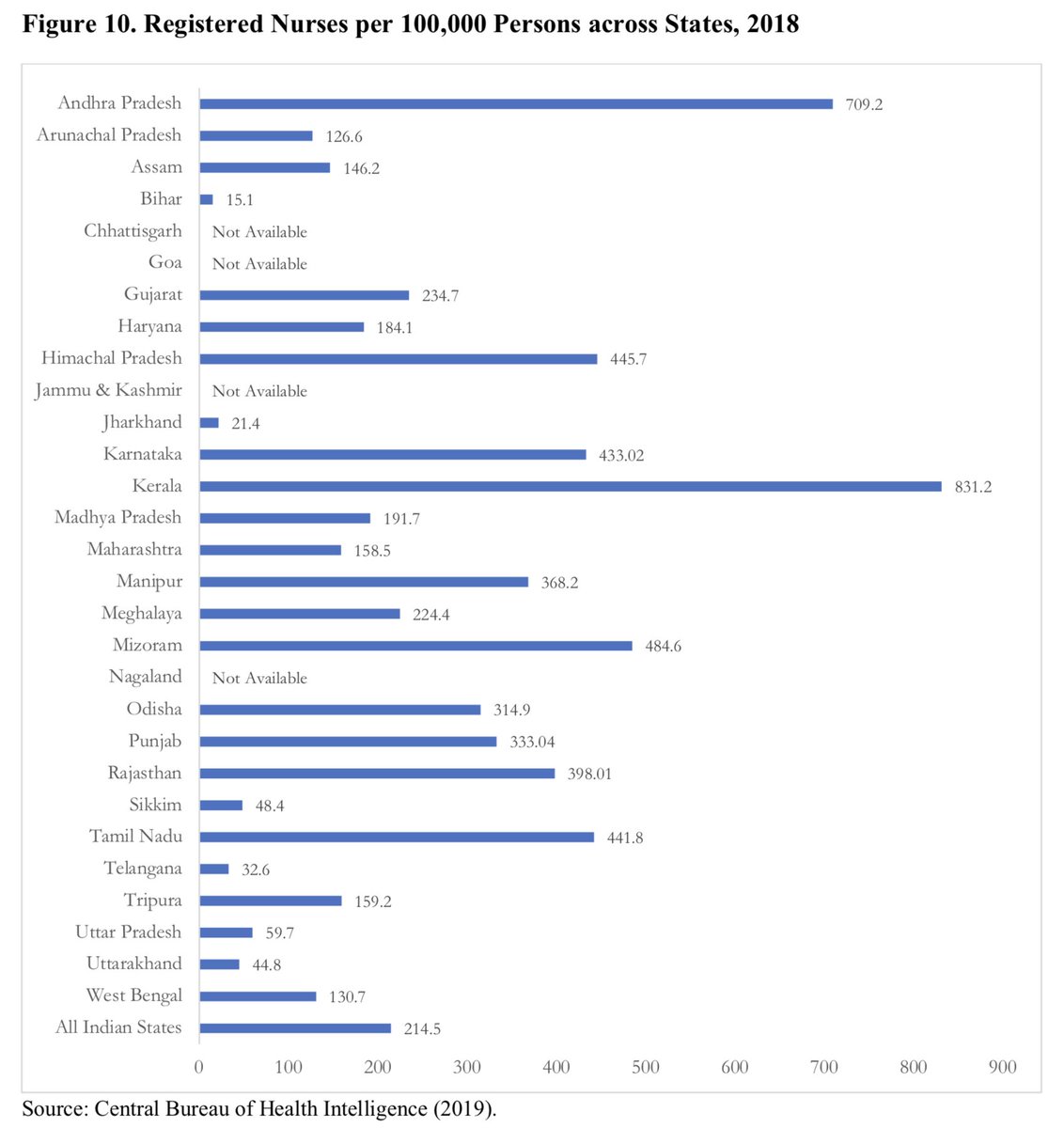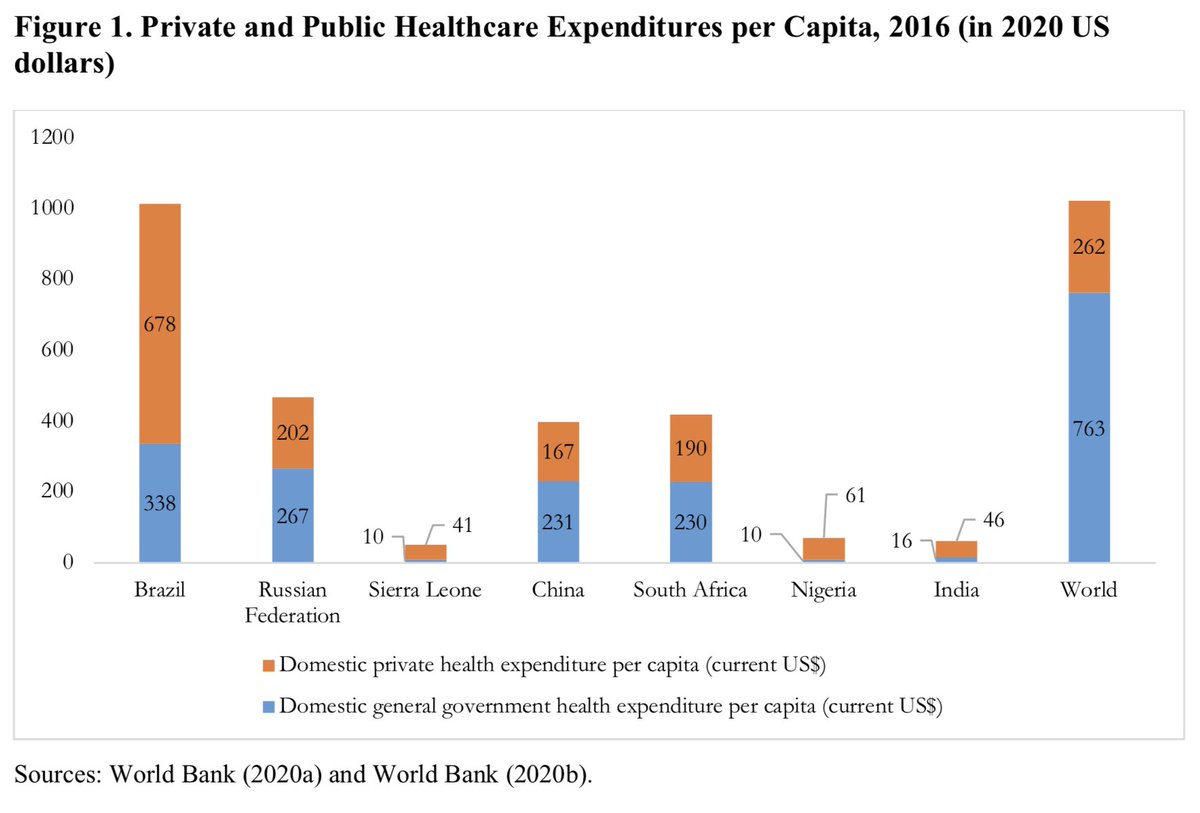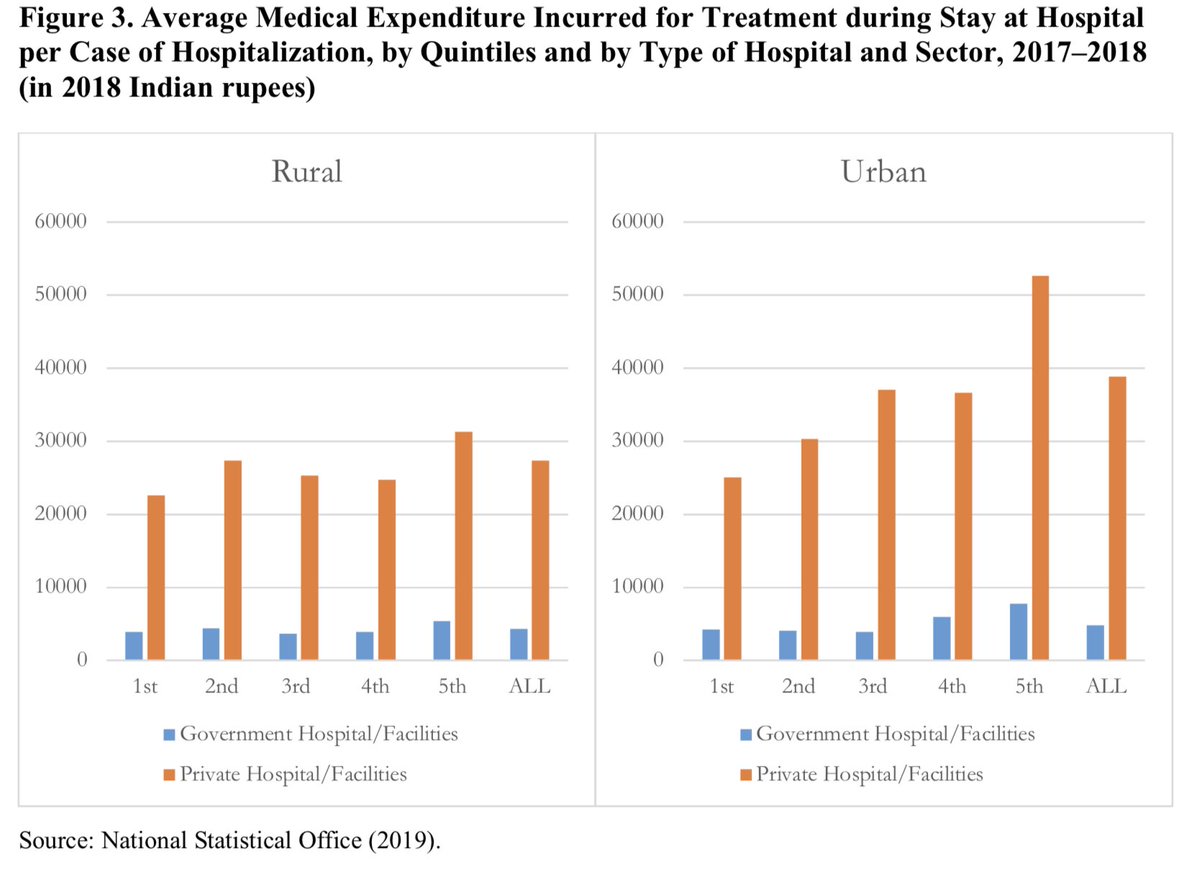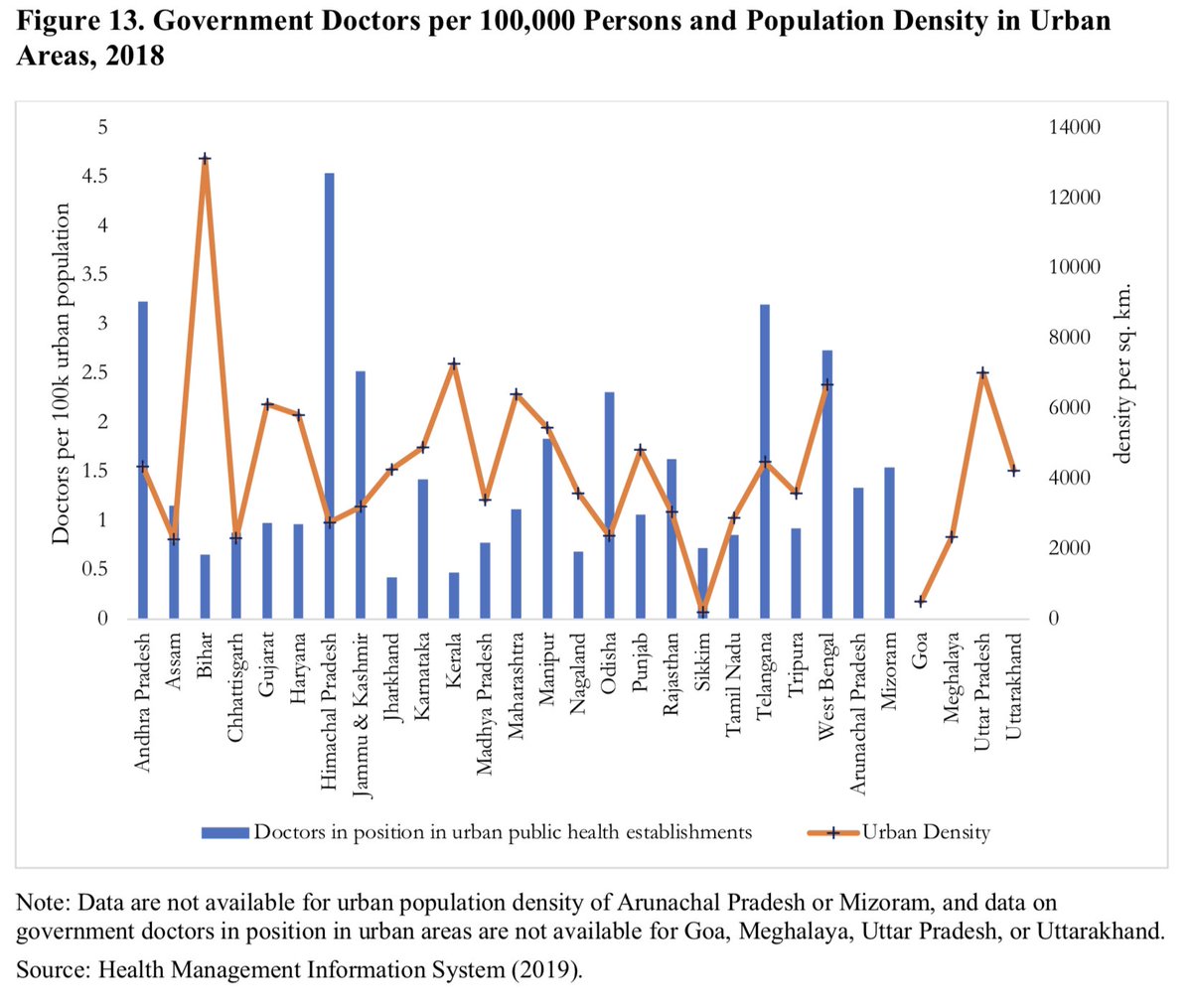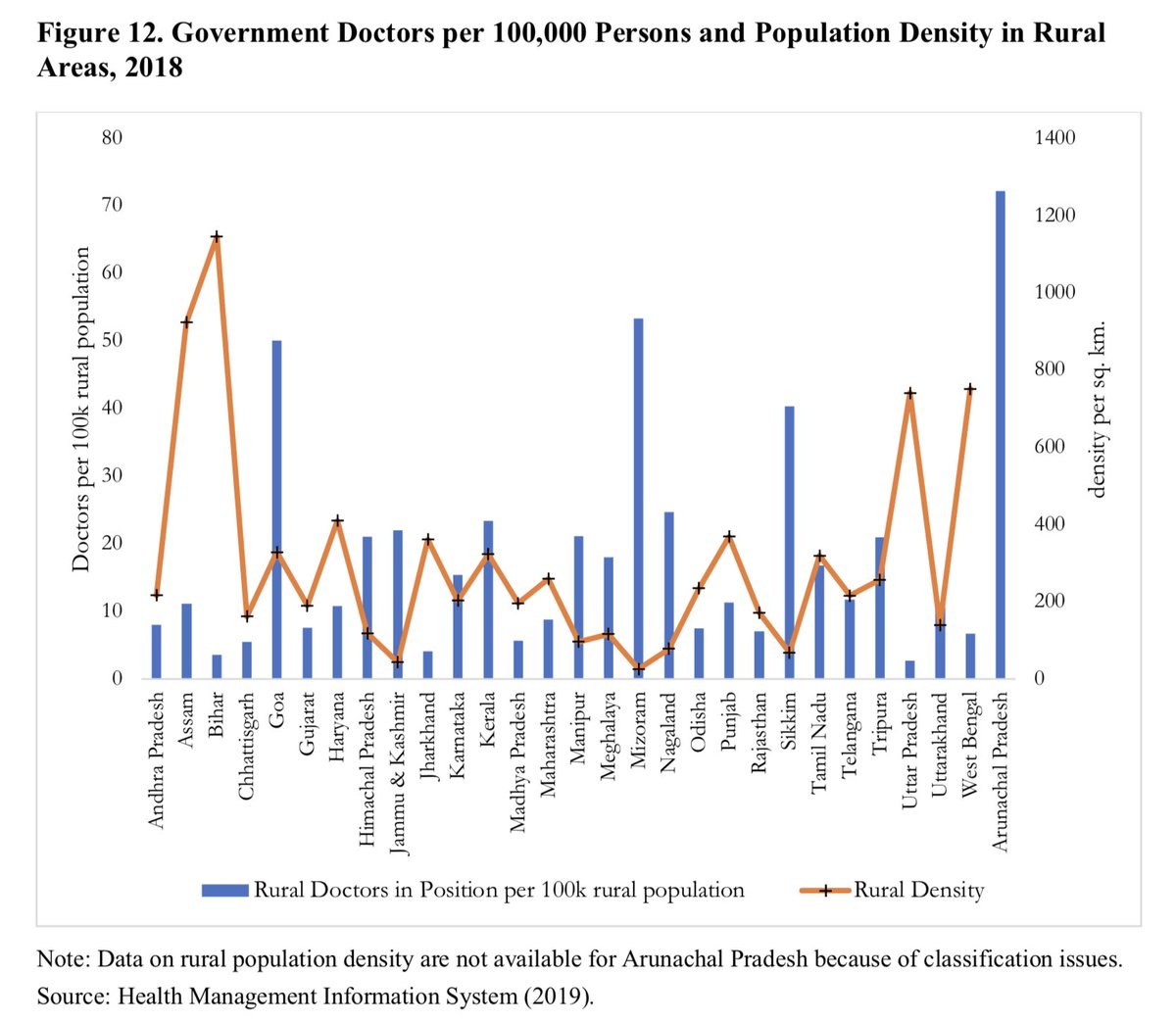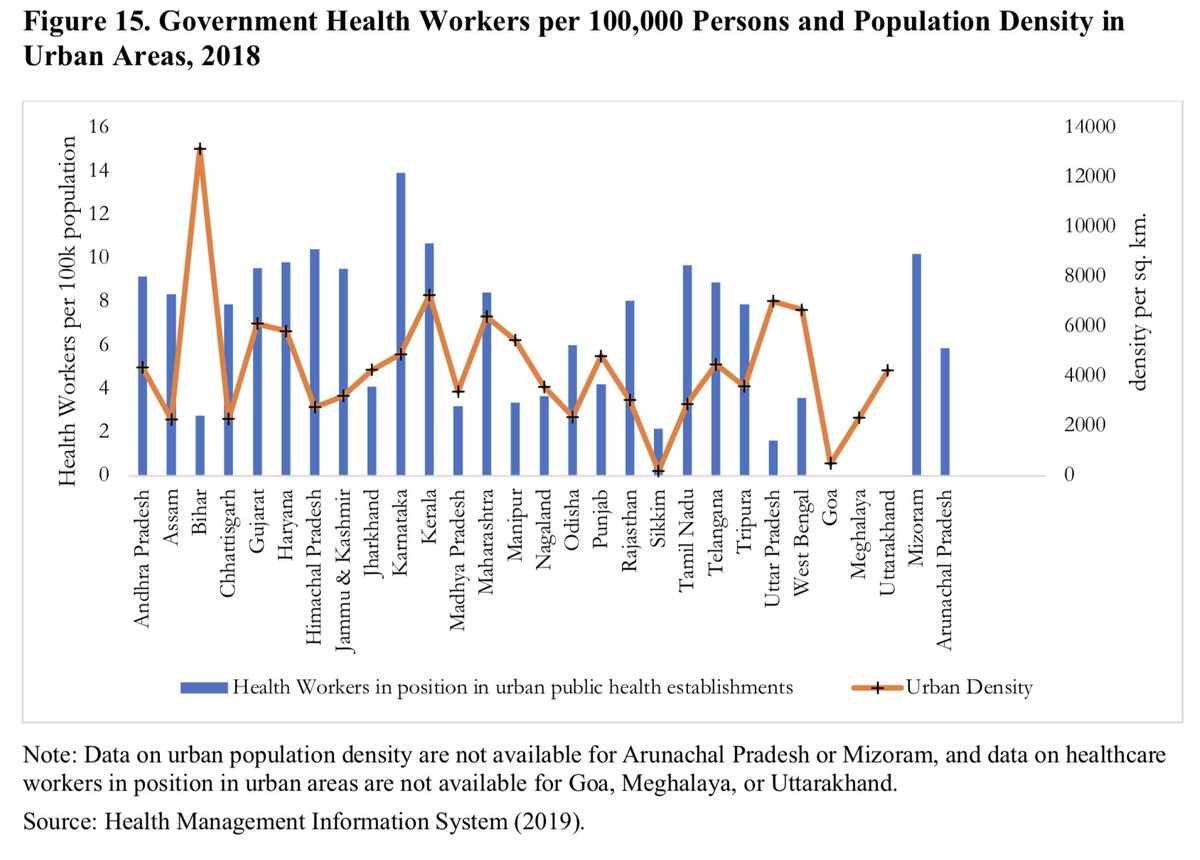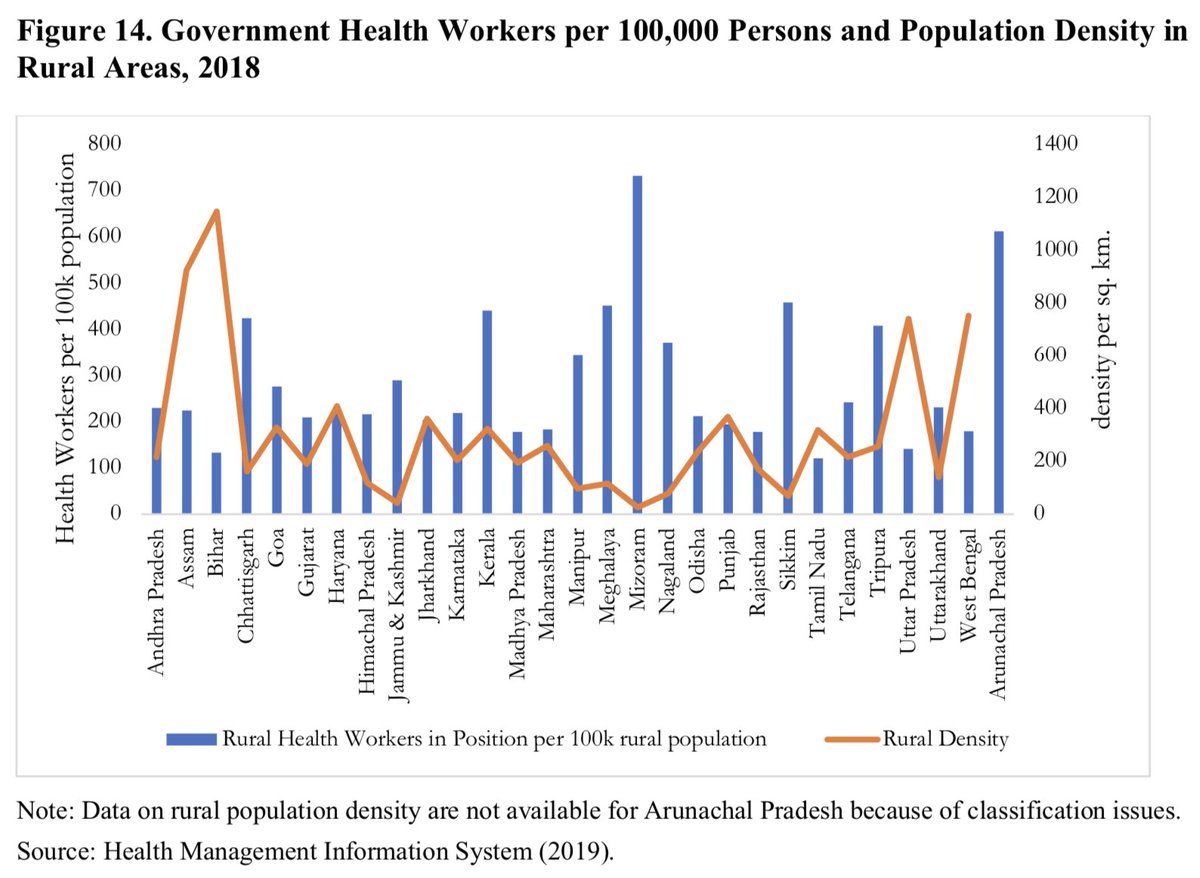A thread on the findings of my new working paper assessing the healthcare capacity in India for the Mercatus Center @mercatus COVID-19 series (coauthored with Abishek Choutagunta @kaapi_croissant) available here https://www.mercatus.org/publications/covid-19-policy-brief-series/assessing-healthcare-capacity-india">https://www.mercatus.org/publicati... 1/n
Overall, India has a fragile system that is not equal to battling COVID-19 and India needs to use the lockdown period, and a few months after, to swiftly increase health care capacity, in the absence of which COVID-19 will be catastrophic. Three more trends detailed below. 2/n
There is a lot of variation across Indian states in healthcare capacity on the following metrics- per capita spending on healthcare, healthcare spending priority in budgets, hospital bed capacity, and capacity in terms of doctors, nurses, and total healthcare personnel. 3/n
Healthcare spending as a percentage of state budgets (indicates priority given to healthcare) also varies across states. 5/n
Our estimate of total number of hospital beds in the government, private, and non profit sector per 100,000 persons in every state. Across all sectors, we estimate that India has about 131 beds per 100,000 persons. 6/n
India has a total of 11.54 million registered doctors - approximately 86.32 doctors per 100,000 persons. 8/n
Total number of registered doctors per 100,000 persons in every state. As this figure shows, the number of doctors in government hospitals are a small proportion of doctors overall. 9/n
This brings us to the second trend - the private sector has far more healthcare capacity than the govt. 90% of all registered doctors work outside govt hospitals in private and charitable hospitals. 55% of hospital beds and 80% ventilators are in the private sector. 10/n
Indians spend 3.66% of GDP on healthcare and the government only spends 1.17% of GDP on healthcare - the lowest amount among BRICS economies 11/n
Only 30% of all ailments are treated in government facilities, with most of the healthcare provided by the private and charitable sector. This is not just an urban phenomenon, even Indians in rural areas prefer a private provider, even if they have to travel for treatment. 12/n
The preference for private sector healthcare is not just a phenomenon among the rich. Survey data show that across all quintiles of expenditure, Indians spend a lot on private healthcare.13/n
The third trend is that within the government healthcare sector, at the state level, there is a lot of variation between healthcare capacity in urban and rural areas. 14/n
In both these figures we compare the number of doctors in govt hospitals per 100,000 in urban versus rural areas with the population density. The urban poor are extremely underserved and at high risk. 15/n
In both these figures we compare the number of healthcare workers in govt hospitals per 100,000 in urban versus rural areas with the population density. The urban poor are extremely underserved and at high risk. 16/n
Policy recommendation #1: India’s private sector healthcare system has more capacity than government facilities, so the Indian government will need to rely on and incentivize the private sector by increasing funding and removing bottlenecks. 17/n
Policy Recommendation #2: Healthcare capacity varies across states, and the union government should use some of our assessments and build on it to identify and assist at-risk states. Bihar and UP are at risk on virtually all metrics and are also large and densely populated. 18/n
Policy Recommendation #3: Compared to rural areas, urban areas are very poorly served by the state government facilities, creating an urgent need for state governments to identify and assist at-risk, high-density urban areas to serve the urban poor. 19/n
Overall recommendation: Without a vaccine, the lockdown, however inefficent and costly, may have to continue longer given the lack of healthcare capacity. India needs a UBI for 700-800 million under stress during the lockdown to borrow time to create healthcare capacity. n/n

 Read on Twitter
Read on Twitter